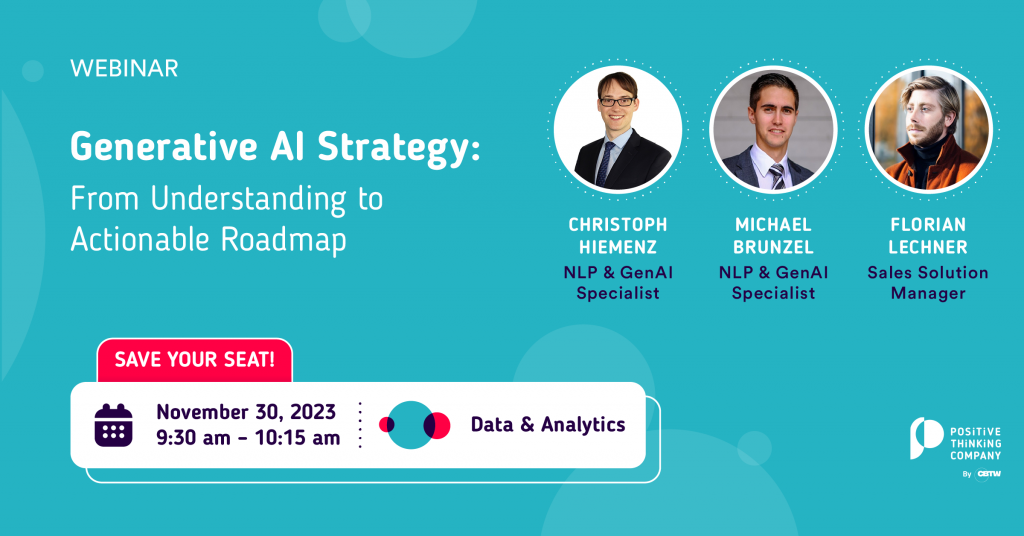As technology continually transforms our methods of interaction and information access, a groundbreaking project has emerged as a beacon of innovation in Europe. This case study explores the development of an AI-driven interactive chat interface, aimed at enhancing the way individuals engage with a wide range of information and opportunities. Central to this transformation is a chatbot powered by advanced language models, offering an information retrieval more intuitive, engaging, and efficient way of information retrieval which is particularly appealing to the digitally adept younger audience.
Context & Challenges
In the rapidly evolving landscape of online information dissemination, our client has been instrumental in providing a key resource for individuals seeking comprehensive knowledge and guidance. Their platform, primarily a web-based knowledge hub, has been crucial in offering detailed insights across various domains. However, with the progression of the digital age, user needs and behaviors, particularly among the younger demographic, are swiftly evolving.
This evolution presented our client with distinct challenges and opportunities:
- Intuitive Information Retrieval Beyond Basic Search: The primary challenge was the existing mode of information retrieval on their platform. While the website’s traditional search system based on keywords was functional, it lacked the intuitive and interactive elements modern users, especially the younger generation, expect. These users seek instant, accurate, and context-rich responses, which a basic keyword search system struggles to provide. Recognizing the need to innovate and adapt to these changing preferences was crucial for maintaining the platform’s relevance and effectiveness.
- Balancing Technological Advancements with Core Values: Given the nature of our client’s operations, integrating technological innovations like a novel chat interface had to align with their fundamental values of inclusivity and public service. The solution needed to be robust, accessible, and capable of handling diverse queries with precision and empathy.
- Simplifying Data Complexity for User-Friendly Access: Another significant challenge was managing the extensive, yet fragmented data hosted on the website. The goal was to transform this wealth of information into a more accessible and user-friendly format, enabling users to easily find what they need and uncover new opportunities.
At this critical juncture, our client recognized the need to enhance their knowledge portal, making it more engaging and effective for a younger audience. This meant transitioning from a basic keyword search to a more advanced, semantically driven search approach. The focus was not just on technological upgrades but also on improving user engagement and satisfaction, ensuring the platform continued to be a vital resource in its domain.
Our approach was to develop an innovative, user-centric solution that bridged the gap between advanced technology and user-friendly interfaces, tailoring it effectively to the platform’s diverse user base.

Our Approach
To modernize our client’s information dissemination platform, we focused on three core strategies: implementing an advanced chat interaction system, designing a scalable and flexible solution, and conducting a detailed analysis of various Large Language Model (LLM) APIs. This approach was tailored to create an intuitive and engaging platform, ensuring technological robustness and adaptability for future developments.
Implementing an Advanced Chat Interaction System
We recognized the need for a sophisticated, user-friendly interface and chose to implement an advanced chat interaction system. This system uses the latest in language model technology to provide efficient and accurate responses to user queries. It combines retrieving relevant information from a comprehensive knowledge base via Retrieval Augmented Generation (RAG) with the generative capabilities of language models. This ensures that the chat interface not only fetches pertinent data but also presents it in a conversational, user-friendly manner. By grounding responses in the existing knowledge base, we ensured relevance, precision, and depth in the chatbot’s answers.
Designing a Scalable and Flexible Solution
In an environment where future-proofing and adaptability are key, we focused on creating a scalable and flexible solution. This approach ensures that the chat system is not limited to any specific server architecture, offering greater flexibility and scalability. We carefully considered the hardware and security requirements, aligning the solution with stringent data protection and privacy standards. This design also facilitates easier integration with future software architectures, ensuring long-term relevance and adaptability.
Comprehensive Analysis of LLM APIs
A critical aspect of our strategy was the thorough analysis of various LLM APIs, both open-source and commercial. We evaluated factors like cost, response time, quality of responses, and ease of integration. Our goal was to provide the client with the necessary insights to choose the most suitable LLM API, balancing cost-effectiveness with performance. This analysis was crucial in selecting an LLM API that met the client’s specific needs in terms of accuracy, speed, and integration with their existing technology.
End-to-End Evaluation of the LLM Application
To effectively optimize the interface, it is necessary to be able to select meaningful metrics, which capture multiple aspects of the interface quality and have high correlation with user acceptance. We used a multi-step evaluation strategy using synthetic questions and questions and answers provided by testers as a reference set. Based on this reference set we computed metrics like BERTScore, and quantified Likert Scores for grammar, fluency, accuracy, conciseness, and robustness via GPTScore. Above all, different versions of the interface were tested by subject matter experts. Based on those evaluation metrics, we were able to optimize the Retrieval step by selecting the best-performing text Embeddings model, Top K filtering, Context Re-Ranking Approach, and the Generation step by optimizing the Prompt Templates, LLM model selection and LLM generation parameters.
In other words, our approach was centered on creating a solution that was technologically advanced and aligned with the client’s mission and operational requirements. By implementing an advanced chat interaction system, designing a scalable and flexible solution, and conducting a comprehensive analysis of LLM APIs, we aimed to transform the client’s platform into a more dynamic, interactive, and user-friendly resource. This transformation was geared towards enhancing user experience and ensuring the platform’s long-term adaptability and effectiveness.
Key Benefits
Enhanced User Engagement
The introduction of our advanced chat interface significantly transformed user interaction on our client’s knowledge platform. This novel, interactive feature successfully captivated a younger audience, crucial for the platform’s growth. The chat interface’s ability to deliver quick, contextually relevant responses made the platform more intuitive and user-friendly, fostering longer and more meaningful engagements.
Empowerment with Advanced AI Knowledge
A key advantage for our client was gaining expertise in advanced AI technologies. Through our collaborative efforts, we not only implemented a solution but also equipped the client’s team with the knowledge to understand and utilize advanced language models and AI technologies. This empowerment is vital for their long-term technological strategy, paving the way for further innovations and applications in their service offerings.
Future-Proofing with Scalable Solutions
Our flexible and scalable solution design ensures effectiveness in the current tech environment and readiness for future advancements. This adaptability is especially beneficial for our client, enabling them to stay at the forefront of the digital evolution. The ability to integrate with upcoming software architectures and adapt to evolving hardware and security needs marks our client as a forward-thinking and technologically agile entity.
Informed Decision-Making Through Comprehensive Analysis
Our in-depth analysis of various AI technologies provided our client with essential insights for informed decision-making regarding their tech investments. Understanding the balance between cost, performance, and integration capabilities allowed the client to choose the most appropriate technology that aligned with their operational objectives and budget. This process of informed decision-making is a significant advantage, ensuring that the client’s investments are both strategic and cost-effective.
Team Involved
The project’s success is largely due to the dedicated efforts of our specialized team, particularly the significant contribution of an experienced AI and Language Processing specialist. This expert, with profound expertise in both the technical and practical aspects of advanced AI technologies and conversational interfaces, played a crucial role in guiding the project to fruition.
The NLP Expert
- Role and Expertise: Our specialist brought extensive knowledge in advanced language processing technologies and their real-world applications. Their expertise in both theoretical and practical aspects of AI and language processing was key in designing and developing the advanced chat interface.
- Responsibilities: The specialist’s responsibilities encompassed overseeing the development of the chat interface, integrating advanced language models with the existing knowledge base, and optimizing the system for peak performance. They were also instrumental in the comparative analysis of different AI technologies, providing insights that shaped our strategic decisions.
- Collaboration and Knowledge Empowerment: Beyond development, the specialist worked closely with the client’s team, facilitating knowledge transfer, and enabling them with the skills to manage and further develop the chat interface. This collaboration ensured that the client received not just a cutting-edge solution but also the expertise to maintain and enhance it in the future.
Technologies Used
The development and successful implementation of the LLM-based chatbot for our client involved a carefully selected array of technologies. Each technology played a specific role in ensuring the chatbot was efficient, scalable, and capable of delivering a high-quality user experience. Here’s a detailed look at the key technologies used:
- Open Source LLM Models from Huggingface Hub were selected based on their license, prediction quality, inference properties (number of model parameters, quantization ability, compatibility with inference libraries)
- Aleph Alpha & OpenAI served as commercial LLM Service APIs to benchmark Open Source LLMs against for Answer generation. Also, commercial LLMs were used to generate questions for a testset and were used to compute GPTScore metrics for evaluation.
- Langchain orchestrated the chatbot’s underlying NLP pipeline combining advanced NLP components like vector database-based Document Retrievers, Cross-Encoder based Re-Rankers, Context re-ordering, LLM Text Generation
- S3 Bucket, Amazon’s cloud storage solution, provided the necessary robust and scalable data storage. It was crucial for securely handling the large index datasets, Text Embedding Model weights and Open Source LLM model weights involved in operating the chatbot.
- vLLM was used as an LLM inference library to enable fast and batched Open Source LLM text generation on the client’s infrastructure. It leads to production-level inference speed by making use of flash attention and paged attention.
- Deeplake was used as a vector database, for retrieval augmented generation, since it offers an API to persist and load the index directly from AWS S3 buckets. Also, the ability to be able to store metadata in addition to the text embeddings made Deeplake attractive.
- Lastly, Streamlit facilitated the fast setup of user-friendly interfaces, for fast user testing.









